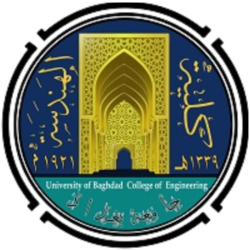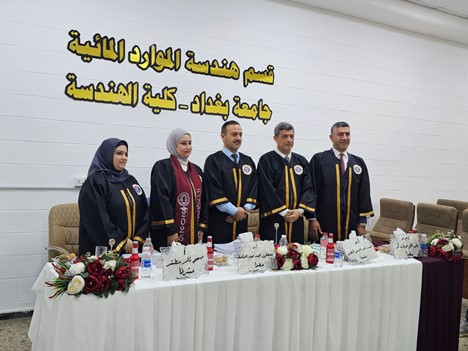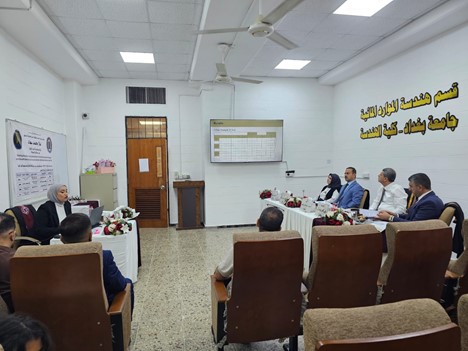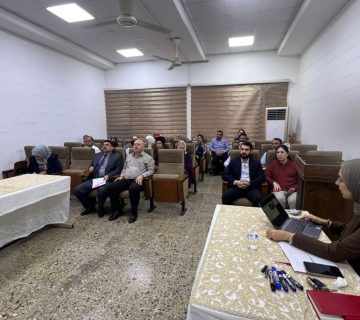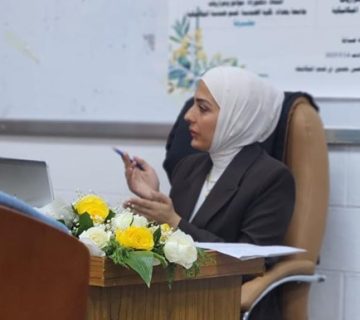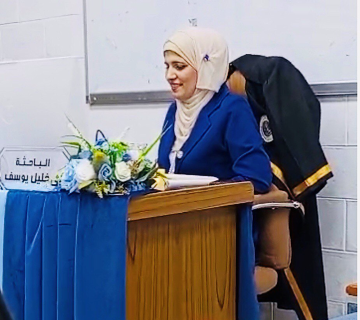The College of Engineering at the University of Baghdad witnessed the public defense of the master’s thesis of student Alaa Mohammed from the Department of Water Resources Engineering, titled:
“Verification of the Effectiveness of Using New Methods to Reduce Seepage Beneath Earth Dams Through the Application of Neural Networks: Haditha Dam as a Case Study”
The defense was held on Wednesday, 18/6/2025, at Dijla Hall in the Department of Water Resources Engineering, under the supervision of Asst. Prof. Maisam Thamer Muttashar.
The study aimed to evaluate the phenomenon of seepage beneath Haditha Dam using the GeoStudio2018 SEEP/W program under different storage conditions, with the goal of determining seepage quantities and directions, and analysing the impact of soil hydraulic properties on seepage behaviour.
A predictive model was also developed using neural networks, based on data extracted from numerical modelling and statistically analysed using JASP software. The study also aimed to evaluate the effectiveness of a range of modern engineering materials and techniques for seepage control, through a comprehensive comparison between traditional and modern methods in terms of technical efficiency, economic feasibility, environmental impact, cost, and sustainability.
The study showed a high correlation between the results of the numerical model and field measurements, with model efficiency (EF) reaching 90.26%, mean error (ME) 0.847, and root mean square error (RMSE) 0.9165, indicating the model’s accuracy in representing actual seepage behaviour.
The results also revealed a gradual increase in seepage rates over different time periods, with an increase of 7.62% recorded during the period from 1989 to 2000, with an average seepage of 0.000022 m³/s, while the percentage rose to 17.89% during the period from 2001 to 2010, with an average seepage of 0.000056 m³/s.
In terms of statistical analysis, a linear regression model was adopted to analyse the relationship between reservoir level and time on one hand, and seepage quantities on the other, where the correlation coefficient (R) reached 0.961, and the coefficient of determination (R²) reached 0.923, confirming the strength of the predictive relationship.
Accordingly, the thesis concluded with a set of recommendations, including the use of GeoStudio SEEP/W software for accurate simulation of seepage behaviour, and the adoption of 5 cm-thick nano-cement as an effective treatment material, given its ability to reduce permeability by 96.13%. It also recommended replacing damaged piezometers, increasing the number of relief wells to enhance groundwater monitoring and reduce seepage risks, promoting the use of JASP software in statistical analysis, and adopting neural networks as a reliable tool for predicting seepage rates and supporting engineering decision-making.
After the scientific discussion by the committee members and the defence of the research, the student was awarded the master’s degree in water resources engineering.
